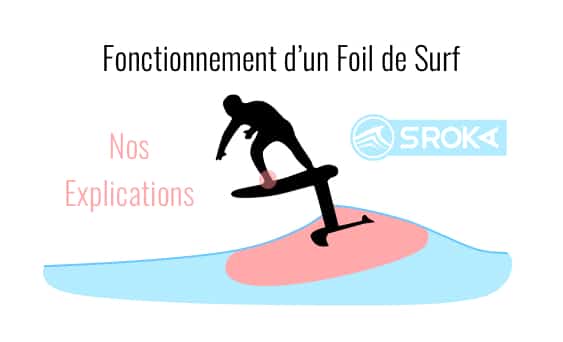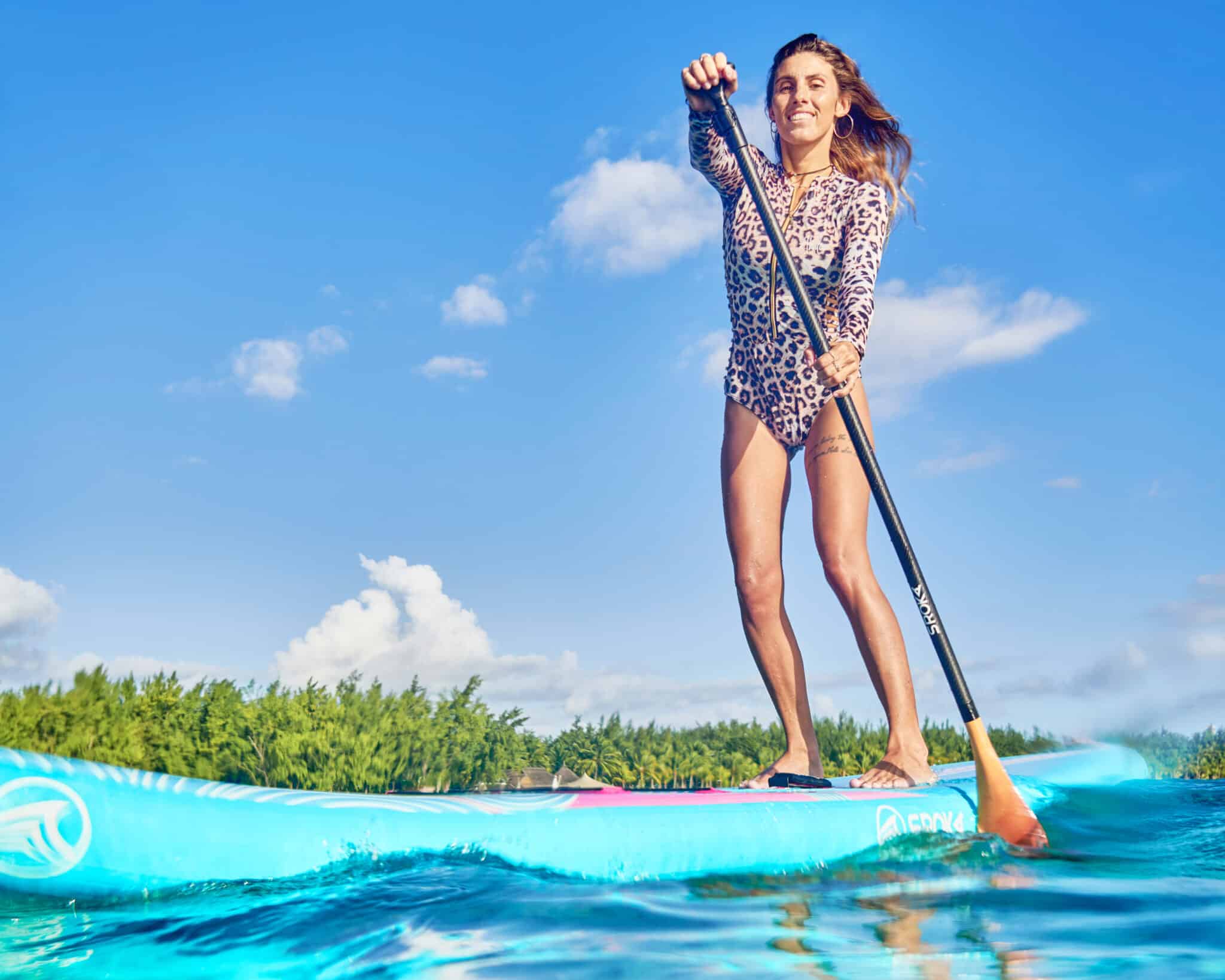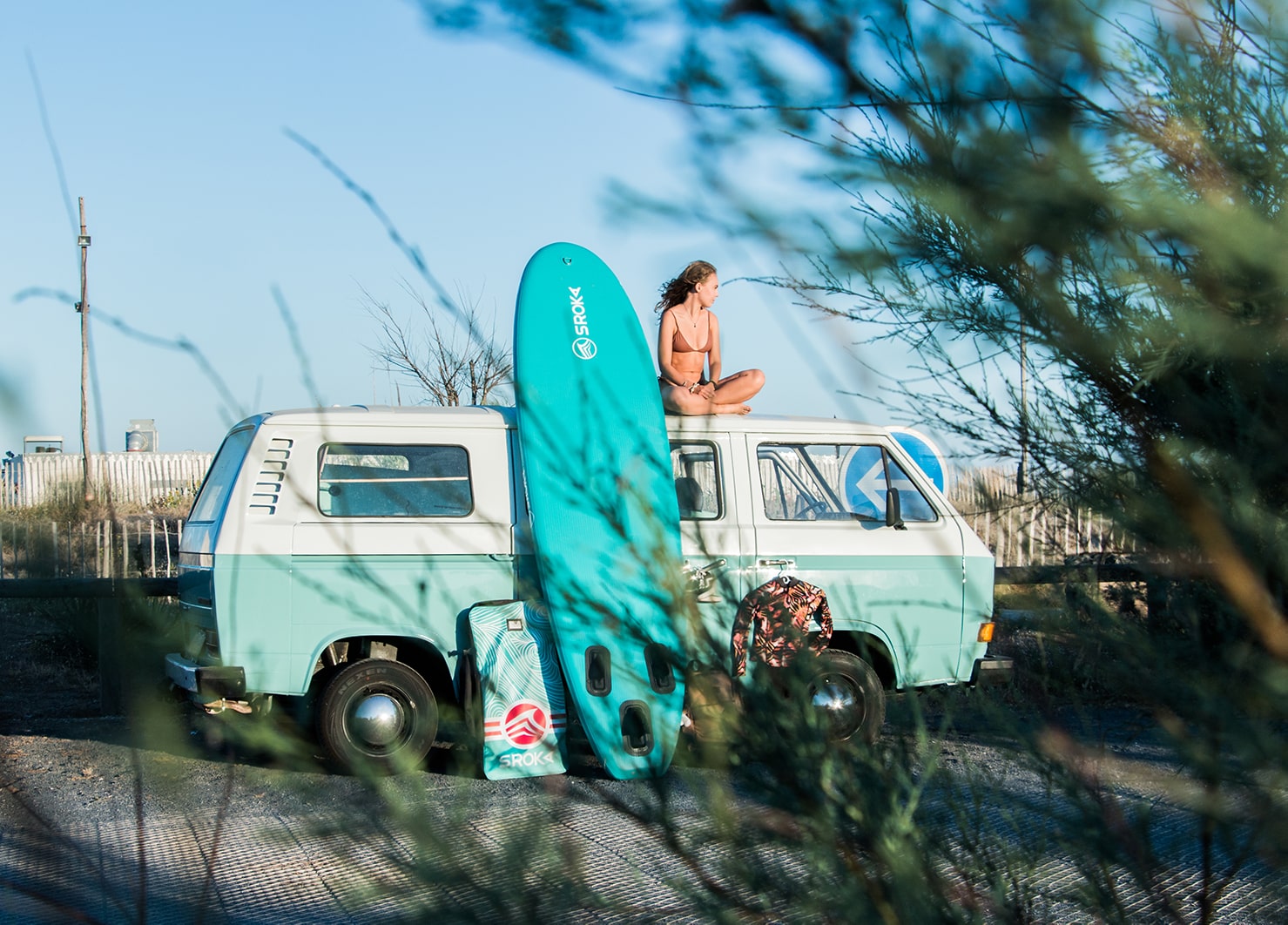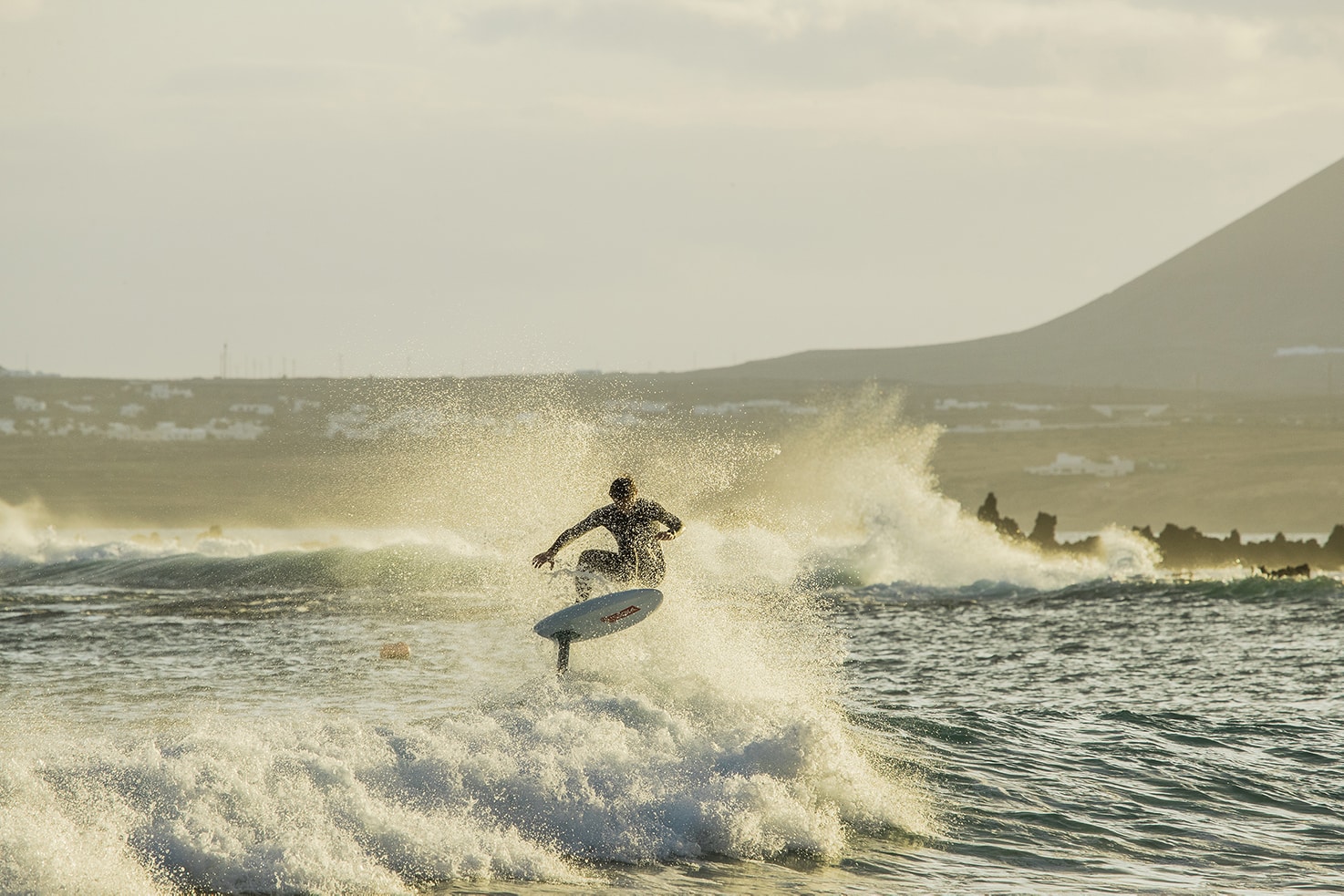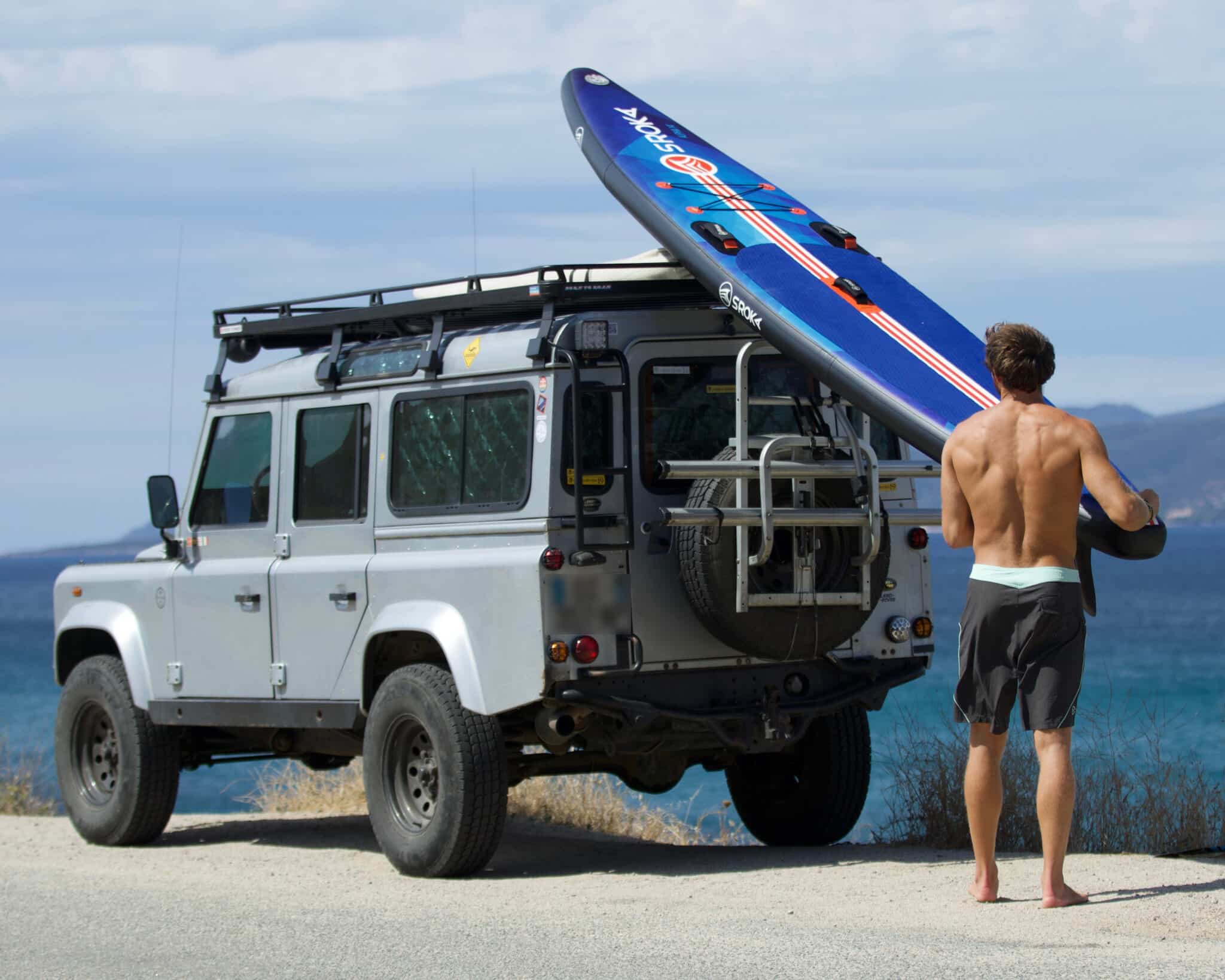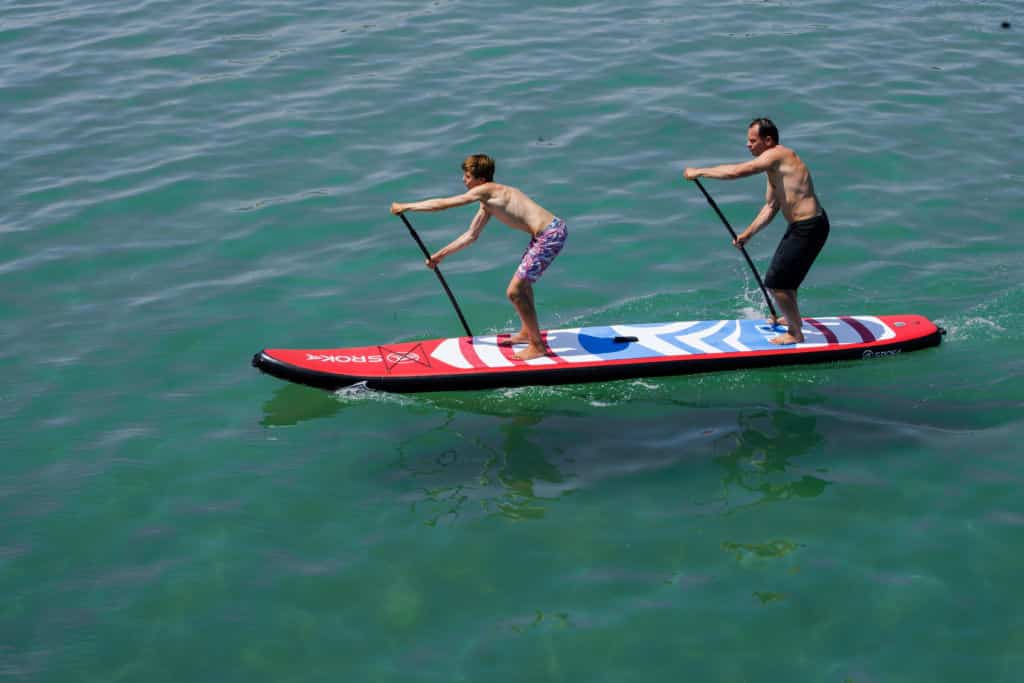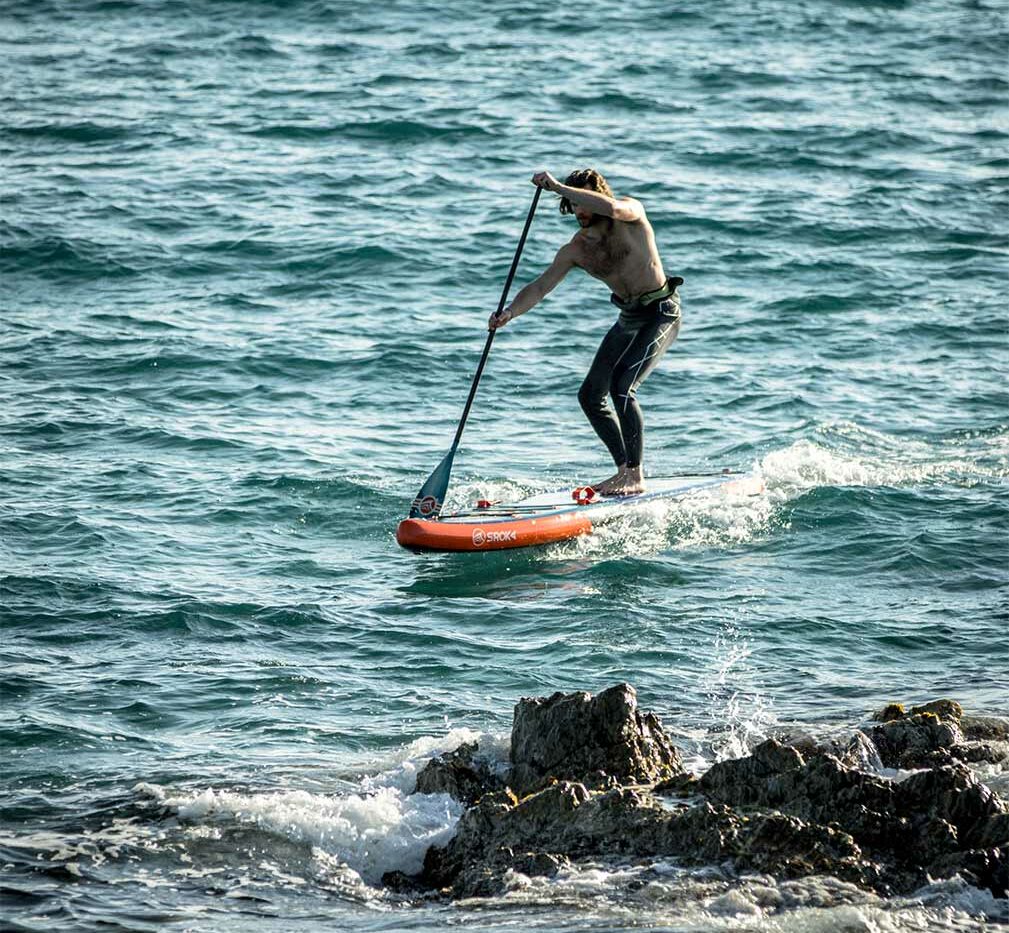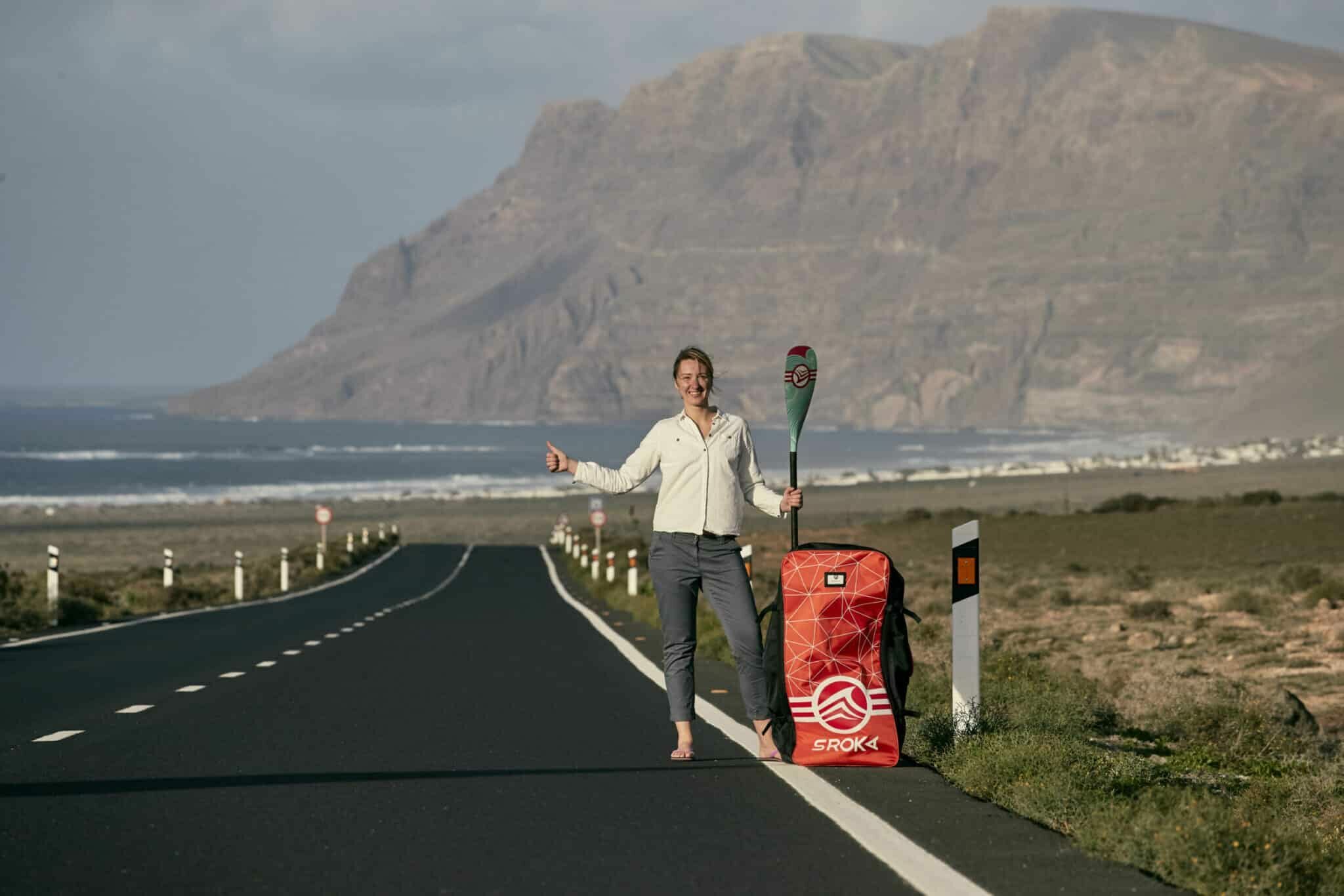 LE MAGAZINE
LE MAGAZINEHow to get started Wing Foil

What is Wing Foil
The Wing Foil is the latest in board sports. It involves manipulating a two-handed kite (“wing”) with a hydrofoil mounted on a short SUP board. It’s halfway between Windfoil, Kite Foil and SUP Foil. In this article, you’ll find all the information you need on how to start Wing Foil .
The advantage of the WingFoil is to be able to move with maximum freedom on the water, using the energy of the wind and the swell. The wing provides maneuverability and makes it easier to take off from foil using a constant force (the wind). The SUP FOIL downwind kite uses only the energy of the swell. Thanks to the kite’s lightness and mobility, it is possible to alternate practices during the same session: first upwind by tacking, then downwind as in Downwind SUP Foil for example. It’s a very playful medium that makes you refocus on your own sensations, without comparing yourself to others.
The hydrofoil allows you to take off above the water and surf above the surface. The Wing Foil is practiced on a short but wide and thick (voluminous) stand-up paddle board, to enable you to stand up quickly. Getting started with WingFoil means experiencing new sensations, moving easily and freely on any type of water surface with relatively simple equipment that’s easy to set up. It can be practised in any wind direction, but is most interesting downwind with a crosswind. It is also possible to practice Wing – Foil in the waves and use the lift of the kite to go back out to sea and link surfing.
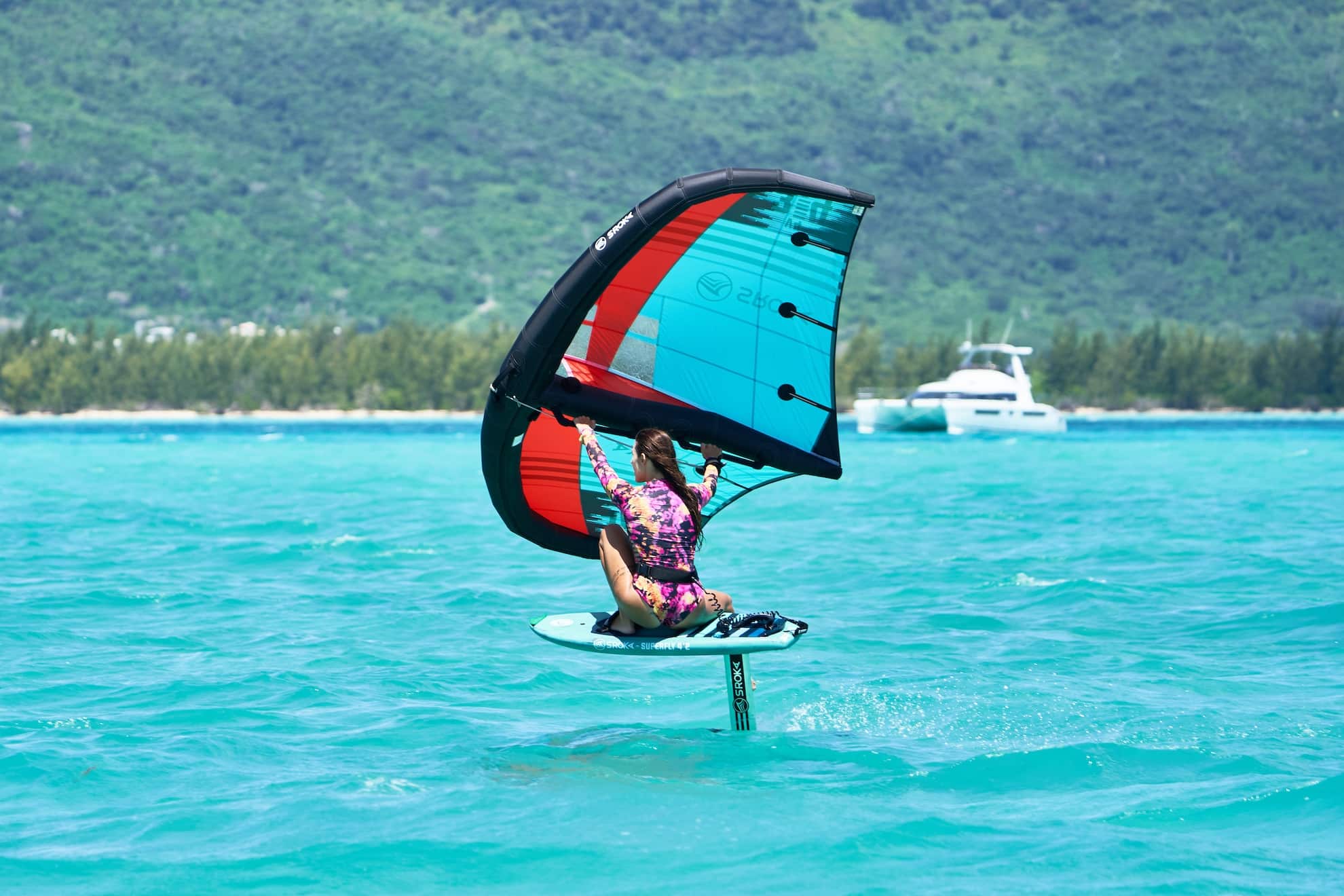
Why start wingfoiling?
Wingfoil is a booming new discipline that is attracting more and more water sports enthusiasts. Here are a few reasons why you should consider taking up wingfoil:
- Unique sensations: wingfoil offers exceptional gliding and flying sensations. Flying over the water, you’ll experience a feeling of freedom and weightlessness, combined with the fluidity of navigation.
- Accessibility: Wingfoil is easier to learn than other water sports such as kitesurfing or windsurfing. Thanks to the lift of foil and the stability of the wing, novices can quickly find their feet, make progress and enjoy themselves from the very first session.
- Versatility: Wingfoil can be practiced in a variety of wind and water conditions. Whether you’re sailing on a lake, in the sea or even on wave spots, wingfoil offers incredible versatility for exploring new horizons and adapting to the water conditions of the day.
- Fitness: Wingfoil involves the whole body, providing an excellent cardiovascular workout and strengthening the muscles of the body, particularly the legs, arms and abdominals. It’s a complete sport that will keep you in shape while having fun on the water.
In short, taking up wingfoil will enable you to discover new sensations, enjoy nature, take on new challenges and experience moments of pure pleasure on the water. Whether you’re a beginner or already a water sports enthusiast, wingfoil offers a unique experience worth exploring.
Who can wing foil?
Wingfoil is accessible to a wide audience, from novices to experienced riders. It’s perfect for water sports enthusiasts in search of new sensations. Whether you’re into surfing, kitesurfing or stand-up paddling, you’re welcome to try wingfoil. However, you’ll need to have a good sense of balance and be in good physical condition to enjoy this discipline to the full.
How do I start Wingfoil?
If you want to start wingfoiling, here are a few steps to get you started:
- Take lessons or find a mentor: It’s a good idea to take lessons at a wingfoil school or shop, or to find an experienced mentor who can guide you and give you valuable advice. This will enable you to learn the technical basics and acquire good practices right from the start.
- Choose the right equipment: For beginners, it’s essential to choose the right equipment. Opt for equipment that is suitable for beginners, but which will also enable you to progress. It’s also important to take your body size into account when choosing your equipment. In the following article, we’ll explain which wingfoil equipment to choose according to your size, your desires and your level.
- Choose a suitable spot: Select a spot with moderate wind conditions and a sufficiently flat, clear stretch of water. Avoid overcrowded areas and make sure you have enough space to move around safely.
- Progress in stages: Start by getting used to the board and kite by sailing close to the beach. Once you feel comfortable, try wingfoil take-offs using pumping techniques. Practice regularly to improve your balance, pumping technique and control of foil.
- Stay safe: Wear a life jacket and use a leash to attach your kite to your wrist. Check the weather conditions before setting off on a session, and always respect the safety rules in force.
What are the conditions for Wing Foil ?
We recommend starting Wing Foil in average wind conditions on a spot sheltered from the swell (between 15 and 20 knots established). It’s easiest to start with a sideshore wind, so you don’t run the risk of being blown out to sea and not being able to come back (onshore wind), or of being blown back again and again by the wind (offshore wind).
Care should be taken when choosing a spot to avoid floating algae, which prevents the hydrofoil from working properly, as well as any other floating objects present. We also recommend bay-shaped spots. That way, if you get too far out, you can always reach the coast and walk back with your equipment. Finally, it’s ideal to start in a water level where you have a foothold, but with enough depth that the hydrofoil doesn’t touch the bottom. It is then possible for an experienced sailor of average 80 kg to sail Wing Foil in winds ranging from 8-10 knots to 40 knots.

Prepare your Wing Foil equipment to get started on Wing!
The Wing Foil is made up of a number of different components. To make getting into the water as easy as possible without damaging your equipment, we recommend the following method:
- prepare your Wing Foil board: assemble your hydrofoil and attach it to your board, then fasten your leash to the board.
- set it down near the water: once the board and foil have been set up, bring them close to where you want to get in the water.
- suit up: and get ready as if you were going straight into the water.
- inflate your wing: the wing has a strong grip on the wind, which is why we only recommend inflating it just before getting into the water. We advise you to inflate it sheltered from the wind and, if possible, to tie it to an object to avoid any risk of it blowing away. As soon as the wing is inflated, immediately attach the leash to your wrist. Avoid abrasion on sand or asphalt.
- join your Wing Foil board: carry the wing by the handle and place the leading edge facing the wind to make it neutral to the wind and easy to carry. Once you are close to the water with your wing and board Wing Foil , attach your leash board.
- carry your equipment to the water: as you’ve set down your Wing Foil board close to the water, you only have a few metres to go, carrying both board and wing. Make sure you always carry your board on the windward side and your wing on the leeward side, to avoid the risk of the wing catching the wind and getting damaged on foil.
Which foil for beginners?
For wingfoil beginners, it’s essential to choose a foil with enough lift and stability to learn and progress quickly. At Sroka Company, we highly recommend our foil S-Foil 1750 Classique for novice wingfoilers of an average weight of 80 kg. If you’re over 90 KG, we recommend you choose the 2000 cm2 front wing. Conversely, for those weighing less than 70 kg, go for a 1500 cm2 front wing. With its large lifting surface, a foil beginner’s wing allows for easy take-off and optimal balance in flight, making it easy to learn the basics of wingfoil flying. But don’t let the beginner’s look fool you, because the S-Foil 1750 is also designed to help you progress quickly. Its versatility will also enable you to learn dockstarting and venture into small waves. When you choose the foil S-Foil 1750 from Sroka, you’re opting for ease of learning, stability, progression and a serene wingfoil learning experience.

How to take off in a wing foil
A key step in getting started with Wingfoil and starting to enjoy Wing Foil , take-off on Wing Foil is not very complicated, but requires the right approach. Our illustrated tips and comments below will help you get it right the first time.
First of all, sit on the board and turn the kite the right way round. Sitting astride will give you more stability when handling your kite. To turn it over easily, move your hands to the leading edge and grasp the kite near one end. Then turn the kite over to position it in the right direction. If you’re comfortable, you can do this kneeling on the board.

The first step is to kneel on your board, holding the wing (the right way round) with the handles provided. Then position the wing above your head, so that the wing tips don’t touch the water. Keep your board perpendicular to the wind. Position your wing horizontally over your head. Once both hands have grasped the handles, the aim is to control the wing’s pitch and reaction to the wind, and to find a stable position on the board. Once you’re stable and in good control of the wing, you can orientate it to catch the wind better by pulling more on the back hand to move your Wing Foil board forward. Tips from Bruno SROKA “When I pull on the back hand I take power, I accelerate, when I release the back hand, the wing takes less wind and I slow down.”

To move on to the second stage, you need sufficient speed. To accelerate, pull on your back hand so that the wind enters the wing (keep your front hand more or less tense). Once you’ve got enough speed to stabilize, you can start climbing the board, starting with your front foot, which you position in the center of the board (in the longitudinal axis). This allows you to stand up in two steps while maintaining your balance.

You can then move on to the third step: getting on the board, this time with your back foot over Foil. It’s essential to be well balanced on the board. We recommend that you position your back foot above the mast, and that your feet are well placed: the back foot should be centered on the board and ideally just above the mast. The front foot is shoulder-length apart and slightly off-center (from the longitudinal axis) in front.
Tips from Bruno SROKA: “If you’re having some stability problems, shift the rear foot slightly to leeward and the front foot slightly to windward of the longitudinal axis. This will allow you to be more stable on the board should the water throw you off balance.
If I press down on my toes, the board will go downwind, if I press down on my heels, the board will go upwind.”

We recommend that you first keep the wing relatively above your head, in a position close to power neutrality, to balance yourself on the board, then lower your wing further in front of you and put yourself in opposition with the wing. And tuck in the back hand to accelerate.

The fourth step is take-off. Like an airplane, you need to generate enough speed to accelerate and thus create lift on your foil to take off. Drop slightly into the wind and pull (tuck) on your back hand to gain more speed. To accelerate even faster, you can pump both hands to gain more power and speed. If you’ve built up enough speed, the foil will take off smoothly and almost by itself. Help it along by pressing lightly on the back foot to lift the board out of the water.
Tips Bruno SROKA: “The key is your speed, if you don’t have enough speed then you won’t be able to take off. So concentrate first on keeping the board in the water, and then keep accelerating.”
When you fly, the first thing you’ll feel is lightness. Your support on the board should be gentle, with no sudden movements. Transferring weight to the back leg raises the foil and transferring it back to the front leg lowers the foil. It’s important to stay upright and keep your center of gravity above foil without making sudden movements to avoid falling.
The windsup + Wing pack for family beginners
To make learning to handle a wing as easy as possible, we offer you a SUP adapted to sailing (one fin at the rear + one in the middle to avoid drifting downwind) and a wing. It’s the best way to discover sailing in complete safety, with the whole family.

For surfers:
For those with a surfing and/or foil background rather than a windsurfing or kitesurfing background, it can be complicated to navigate using both foot positions(goofy and regular stances). It is possible, as in the photo opposite, to sail with your back to the sail in one direction and your front to the sail in the other. This has the advantage of ensuring good control of the board and foil, but has the major disadvantage of making it much harder to get upwind (it involves twisting the body between the axis of the legs and the shoulders). We recommend training yourself to change position to be able to ride upwind more efficiently, and to switch back to your most comfortable stance with each turn.
Safety rules
The Wing Foil is a high-risk board sport in the same way as windsurfing, kitesurfing or any other Foil sport. We recommend that all participants take the following items with them during their session: leash board and leash wing (compulsory), flotation jacket / impact vest (compulsory if you exceed the 300m zone), helmet (recommended). It’s really not advisable to do a session on your own, whatever your level. You should always tell someone about your session and the times you plan to practice.
We recommend that you only practice Wing Foil on spots that have been studied and identified in advance. As marine weather is changeable and unpredictable, it’s essential to stay close to the coast so you can get in quickly and easily if the wind shifts, strengthens or drops completely. Pay particular attention to the effects of tidal currents and swells. Sometimes it’s better to give up a session than to have a big mess.
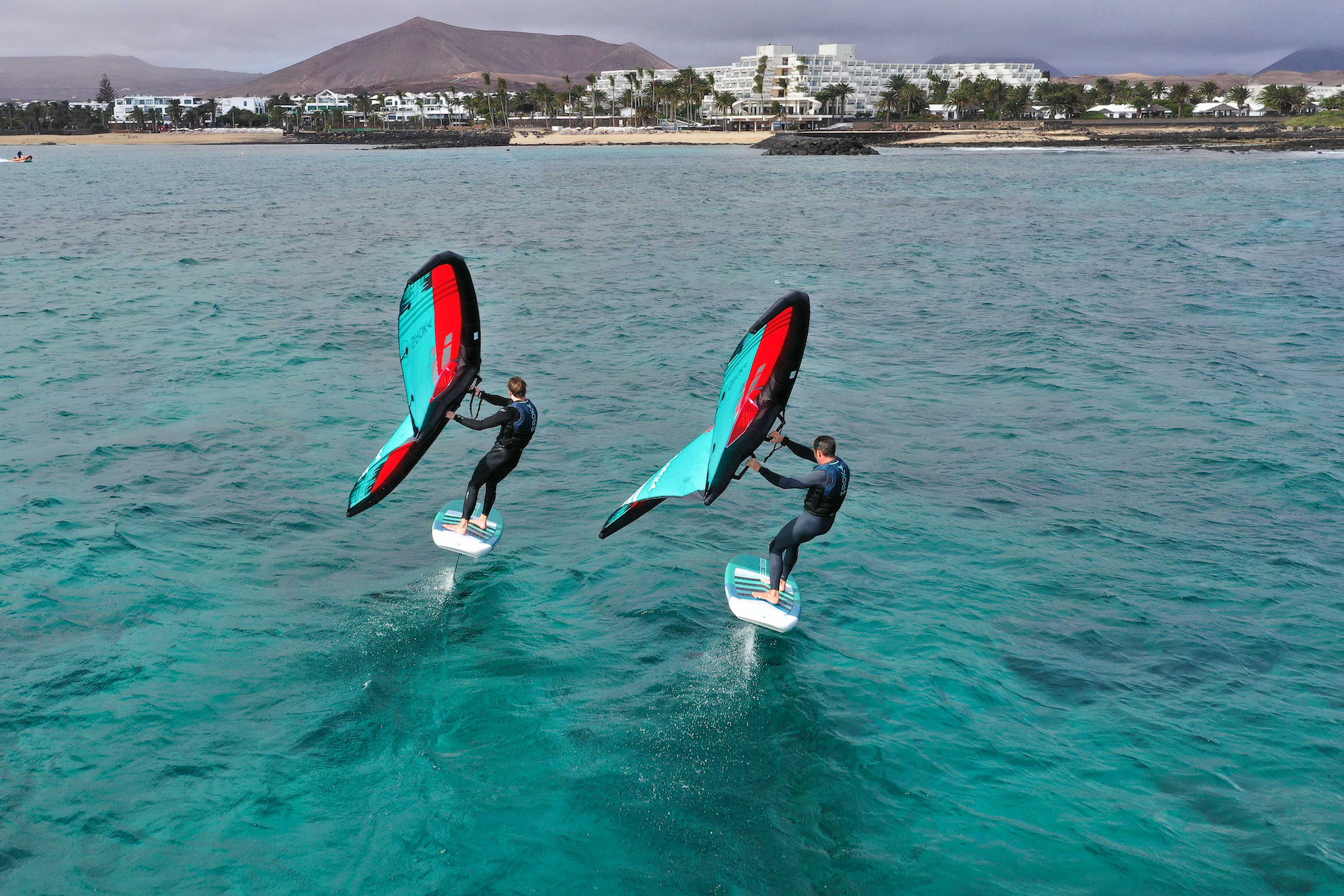
Wing foilwhich brand to choose?
When it comes to choosing a brand for wingfoil, opting for quality equipment is essential. It’s important to remember that price doesn’t always guarantee quality. At Sroka Company, we focus on the constant search for the best quality at the best price. Our commitment to quality is reflected in every one of our products, with meticulous attention to detail, durability and performance.
Choosing quality wingfoil equipment has many advantages. It guarantees better stability, increased responsiveness, a longer lifespan and a more enjoyable gliding experience. The quality of the equipment also influences the safety and confidence you feel when you’re on the water, which is essential if you’re to enjoy this discipline to the full.
But above all, it allows you to make rapid progress. Unfortunately, not all equipment is created equal, and your progress will be largely determined by your choice of material. Opting for quality equipment will give you the best learning experience.
When you choose Sroka Company, you can trust the quality of our equipment and our commitment to offering you the best value for money. Bruno SROKA, three-time world kiteboarding champion, tests all our products and is totally involved in product development. We’re passionate about wingfoil, and we want to share that passion with you by offering products that meet your highest expectations.

What equipment should you choose to start Wing Foil ?
Like all board sports, Wing Foil has a technical side that makes the choice of equipment very important. This technical aspect is compounded tenfold by the fact that Wing Foil harnesses both the wind’s energy via the Wing and the swell’s energy via the hydrofoil.
Thehydrofoil consists of a mast, a fuselage, a front wing and a stabilizer. The length of the mast has a real impact on the way you sail: a shorter mast is more reassuring and easier to start with, but a longer mast allows you to gain more height and avoid touching the surface. The most influential parameter of foil is the front wing: profile, surface, thickness, but also length and width of the wing have a strong influence on lift and wing behavior (speed, stability and handling).
The Foil board used to practice Wing Foil can vary according to your size and level of practice. However, we strongly recommend starting out with a stableWing Foil board (between 105 and 120 L), so that you can concentrate more on handling the kite and managing the foil than on balance when you first start out.
The Wing is a kite specially designed for Wing Foil . It can also be used on a SUP board without foil for beginners, or with a mountain (medium wind) or carver (light wind) skateboard. Wing comes in different sizes, constructions and shapes. The size of a Wing is measured by its surface area: 3m – 4m – 5m – 6m – 7m. A Wing equipped with a boom will be easy to handle, but bulkier than a wing with handles. Finally, the thickness and shape of the leading edge have an impact on the wing’s rigidity, performance and handling. A thick leading edge will generate a lot of power, but will be slower and heavier.
OUR ADVICE: the choice of Wing is very important, as it is the “engine” of your Wing Foil . There are two trends in wing construction: those that are very light but not very reinforced and therefore not very durable over time (wings are very fragile) and those that are a little heavier with reinforcements but more durable and shock-resistant. Then: it’s more worthwhile to invest in 2 sizes of wing to cover a wider range of uses, than in 1 wing and 2 fins before foil.
What wing size for wing foil?
The four front wing sizes of the S-Foil SROKA have been designed to be interchangeable for a wide range of uses. Wing Foil and to practice other disciplines, always according to the level of each practitioner and the conditions :
- S-Foil XXL 2000: Beginner (90Kg+) in all conditions, intermediate in light winds (12nds and less)
- S-Foil XL 1750: Beginner (70Kg+) in all conditions, intermediate in light winds (12nds and less)
- S-Foil L 1500: Beginner (50Kg+) in all conditions, intermediate in light winds (12nds and less)
What size board should you use for wing foil?
It’s important to have a board that’s stable enough for your size and level to start Wing Foil in the best possible conditions. Beware of miniaturization: it’s very difficult and frustrating to start with small equipment, if not impossible, even with a good level of board sports. Board sizes such as 5’7 and 6’0 are ideal for beginners, even if a 50 or 60kg person looking for an evolutionary board might consider a 5’4… but not below.
Our Sky Rider range is available in 7 sizes, 5’4, 5’7, 6’0, and 6’3. Inflatable models also have their advantages(available in 5’3, 6′ and 6’4 for the V2 version and V1 version on special offer here, while stocks last): shock-resistant, kind to the knees, stable and easy to transport, while retaining great gliding sensations thanks to a carbon plate. Read our full article on inflatable boards here.
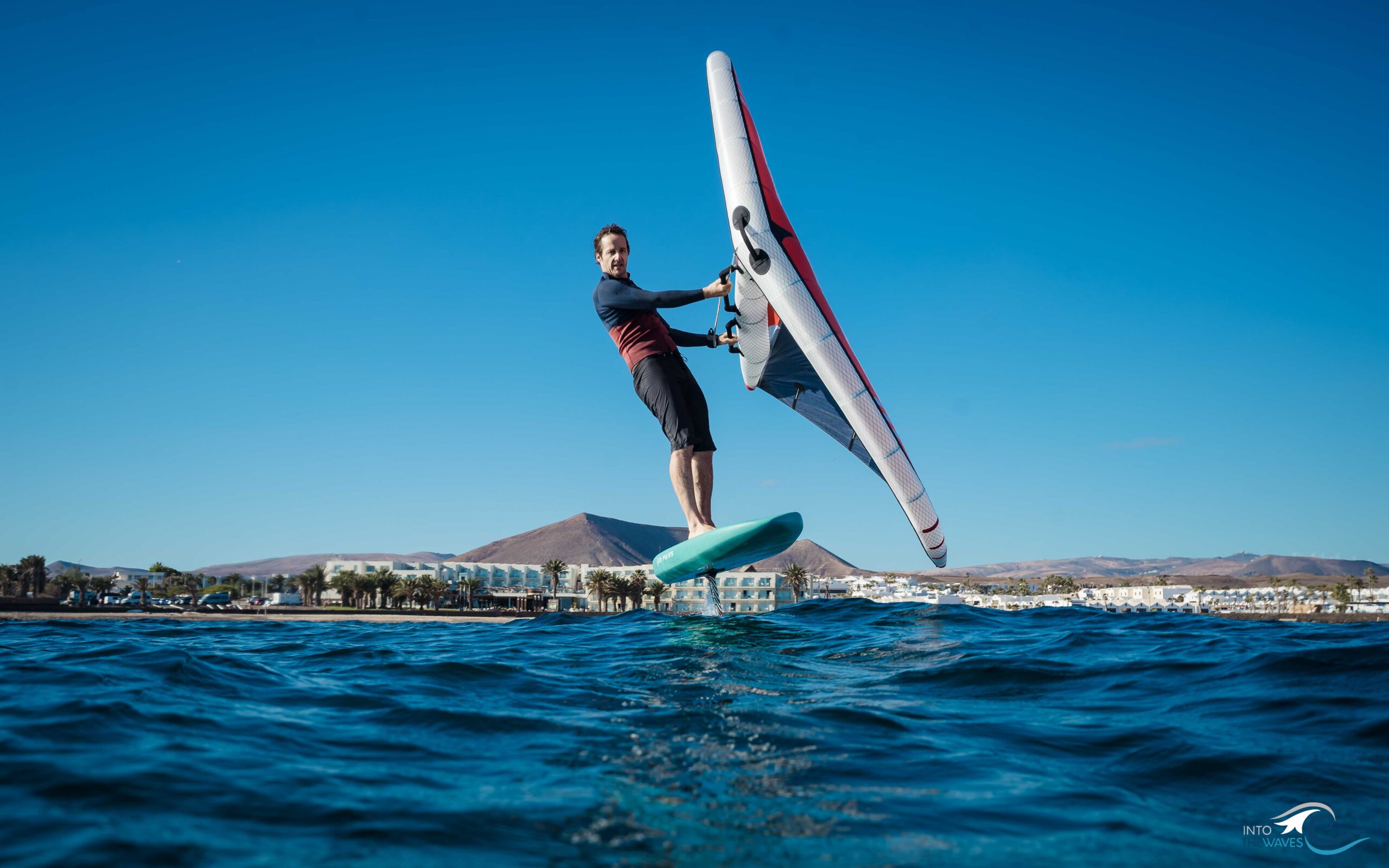
How fast can you wingfoil?
In general, the average wingfoil speed is around 20 knots. This is a comfortable speed at which to enjoy the sensation of gliding and freedom on the water. However, with good progress and experience, it is quite possible to reach higher speeds, around 25 knots or even more. This higher speed is generally achieved by the most advanced riders, who have perfectly mastered their technique and exploit the full potential of their equipment. It’s important to note, however, that it’s not speed that determines a rider’s skill level, as this depends on a number of variables such as weather conditions, type of water and equipment.
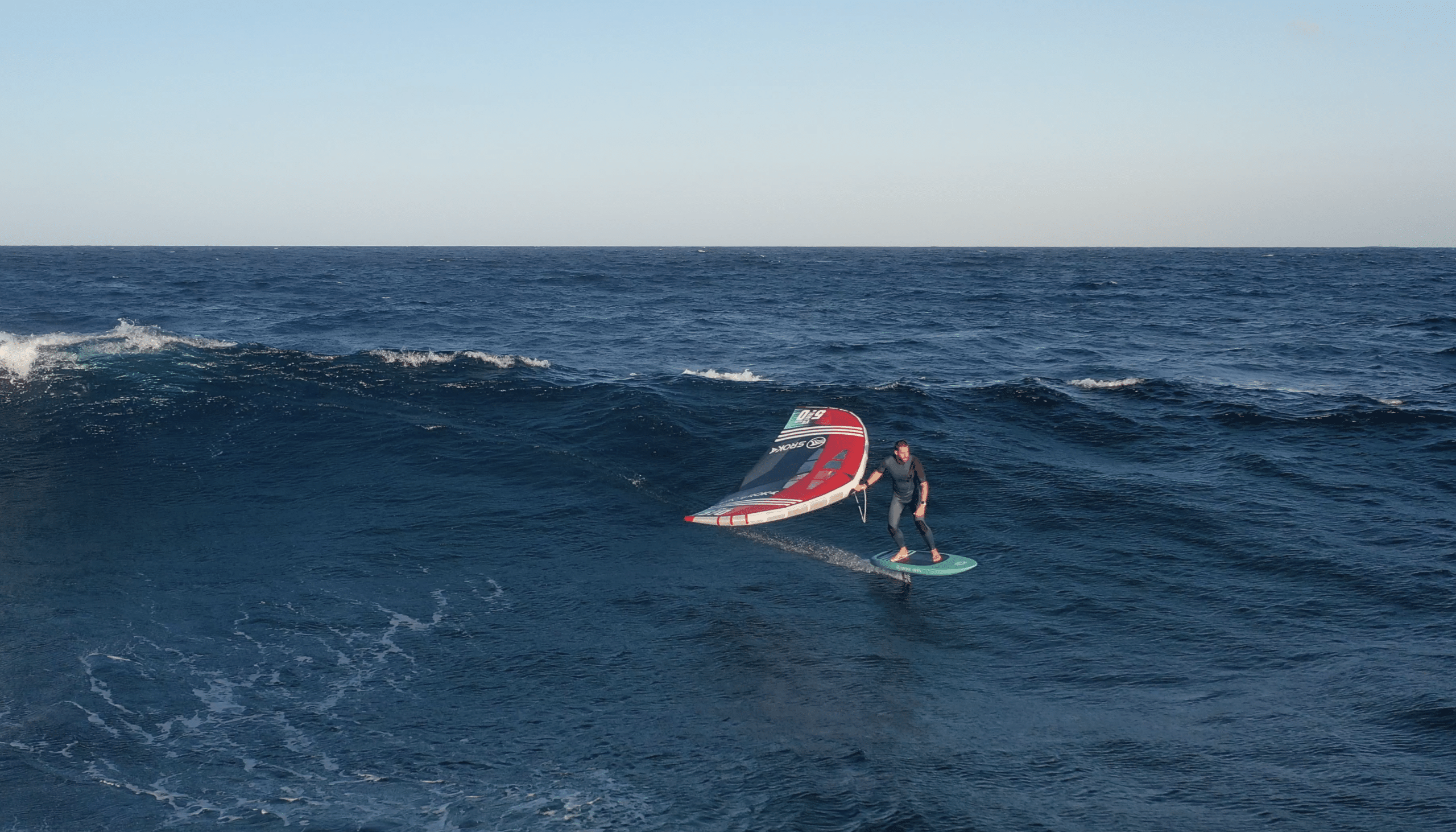
Kitesurf or wing foil?
The choice between kitesurfing and wingfoiling depends on personal preference and the sensations required. Kitesurfing offers thrills thanks to the power of the kite, but ideal conditions are rarer. What’s more, kitesurfing requires more complex equipment set-up and more space to launch the kite. Wingfoils, on the other hand, offer the unique sensation of flying over water rather than gliding along its surface. Wingfoil is also more practical, as it can be practiced more frequently in a variety of conditions and spots. Although it may be slower than kitesurfing, wingfoil offers an immersive sailing experience and unique sensations. The choice between kitesurfing and wingfoiling will therefore depend on individual preferences and whether you’re looking for occasional intense sensations or a more regular and versatile practice.
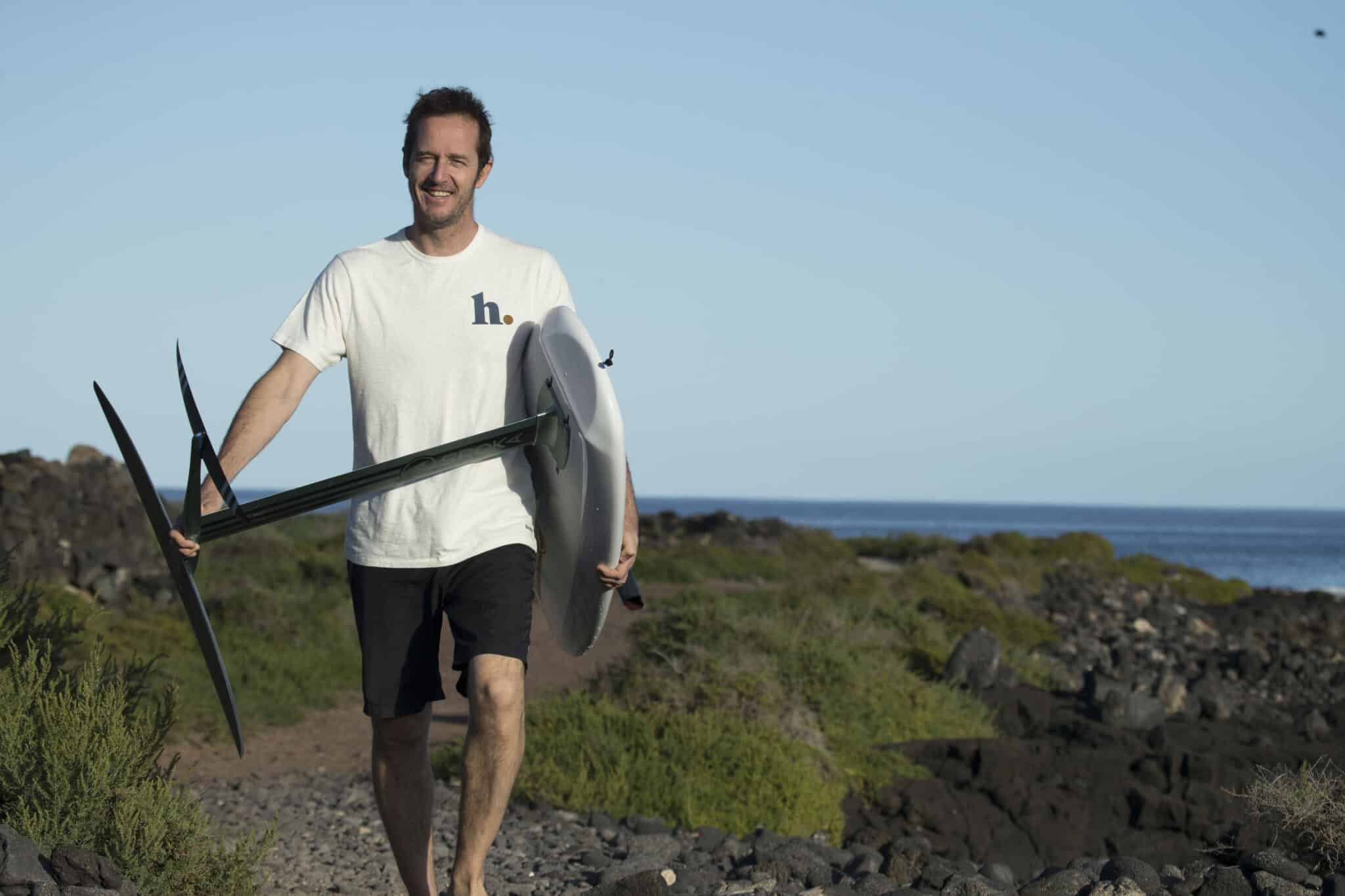
Bruno Sroka’s opinion of the wing foil
The Wing Foil is a free-ride sport that maximizes pleasure while minimizing equipment. Easy to prepare, it’s pure pleasure. You’re not looking for speed or height, but the sensation of gliding over the water and the wind swell, alone or with friends, with no headaches. It’s a 100% fun sport for those who want to be smiling all the time on the water.
Advice from Bruno SROKA:
- Start on flat water, sheltered from the swell, and never with an onshore wind.
- Don’t overestimate yourself. If conditions aren’t right for getting started, don’t go.
- Buy equipment adapted to your level, size and location
- Watch out for other riders. As time goes by, you’re going to go upwind and downwind more and more. With the wing, you sometimes lose visibility, so make sure there’s no one downwind of you when you start surfing the waves.
- Start with a large front fin, it’s more stable, a little slower and allows you to fly in lighter wind conditions quickly and without hurting yourself.
- Choose the right equipment. It’s better to invest in a 4m wing and a foil with two choices of front wing to optimize the wind range and save money.
If you need any help, don’t hesitate to contact us on 02 98 32 53 69 or contact@srokacompany.com
 Le Magazine
Le Magazine



